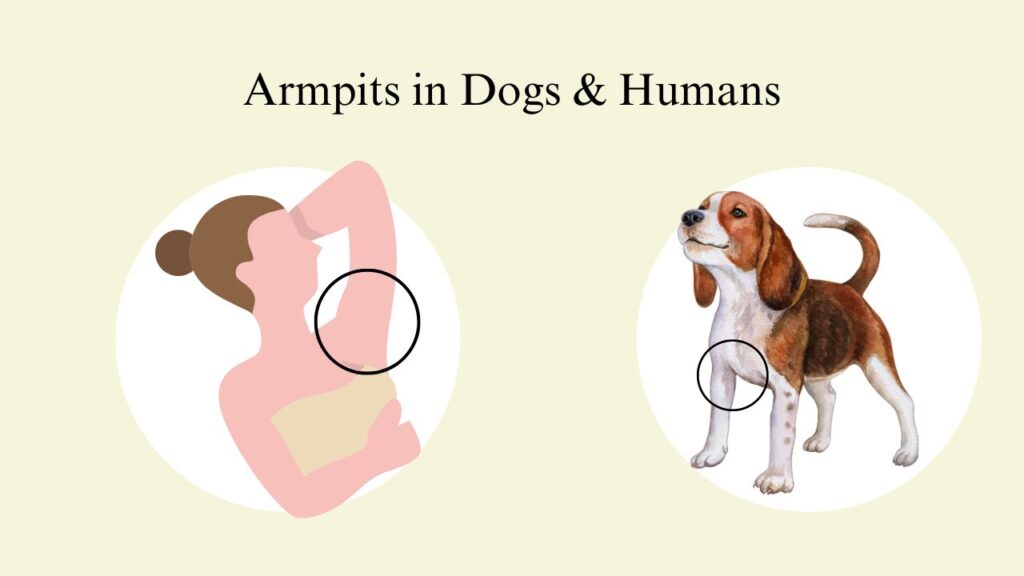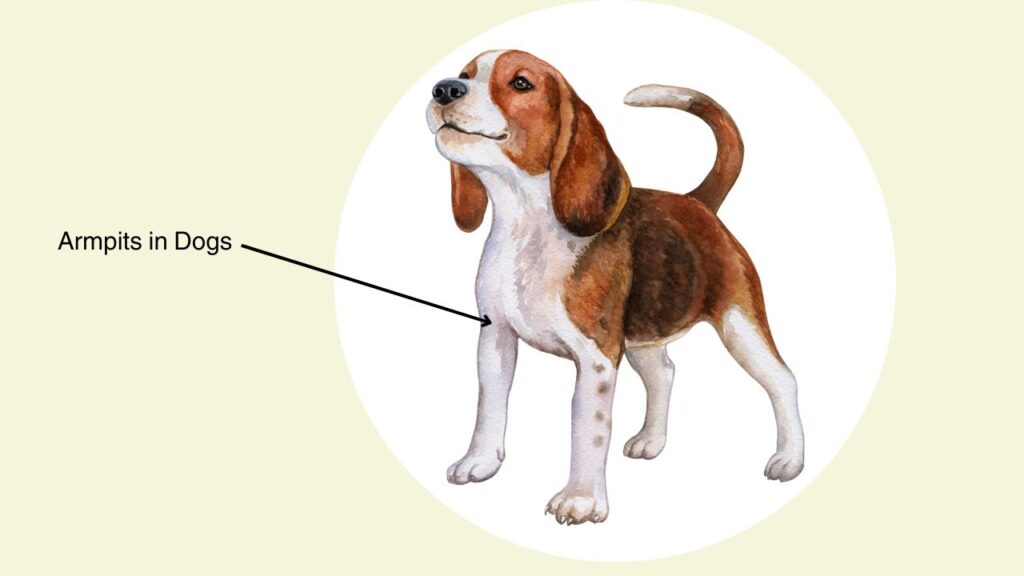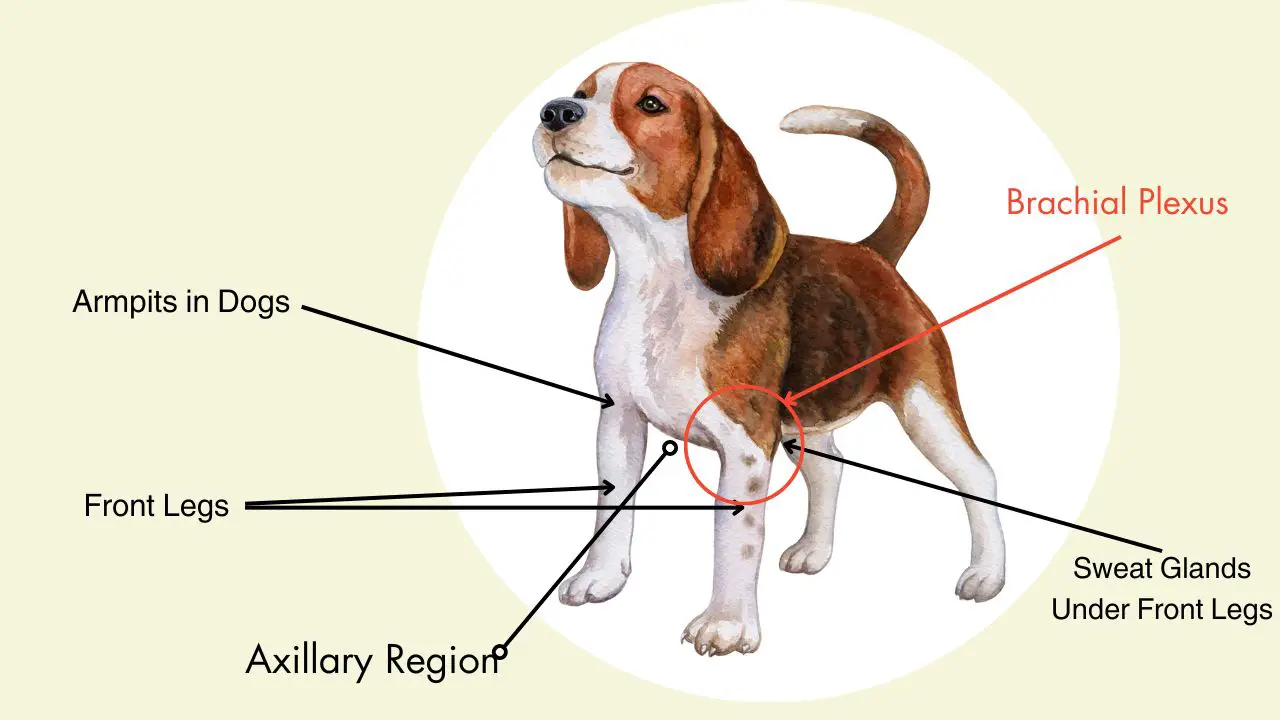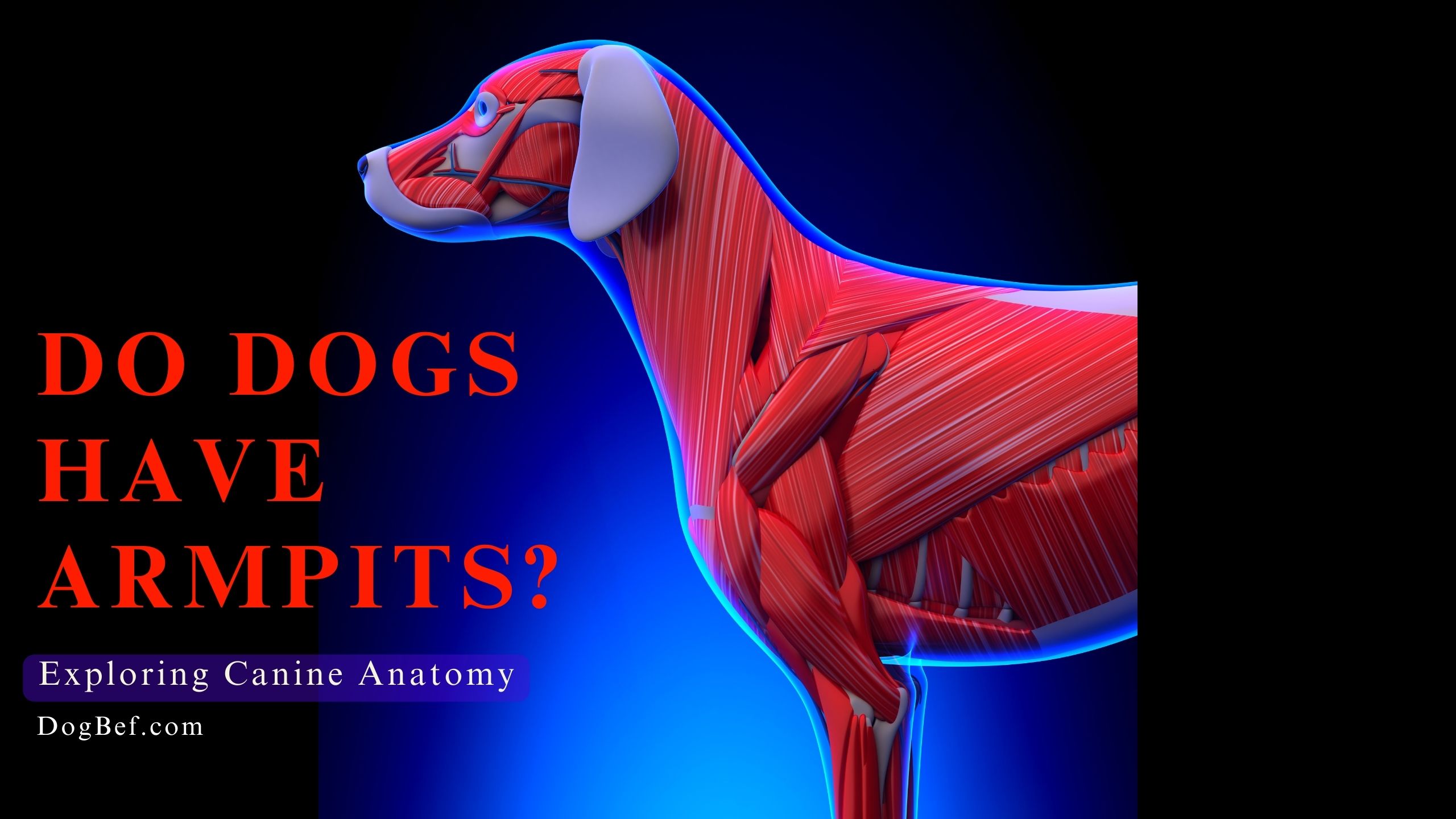When it comes to our canine companions, we know they have features like floppy ears, wagging tails, and wet noses. But do dogs have Armpits?
Yes, dogs have areas where their front legs meet their body, often colloquially referred to as “armpits.” However, unlike humans, dogs don’t have sweat glands in these areas.
These distinct folds where your dog’s front legs meet its chest serve some very important purposes. Armpits help your four-legged friend move their limbs freely and contain lymph nodes that are part of their immune system. Dogs also have apocrine glands in their armpits that produce pheromones for communication.
In this article, we’ll take a closer look at the wonder of doggy armpits. We’ll explore where they’re located, what they look like, and how they help your pup stay healthy and happy. You’ll learn some tips for keeping your dog’s armpits clean and detecting any signs of trouble.
In this article, we’ll take a closer look at the wonder of dogs armpits. We’ll explore where they’re located, what they look like, and how they help your pup stay healthy and happy. A comprehensive guide on why dogs don’t have smelly armpits, the anatomy involved, & intriguing role of sweat glands. Also, learn some tips for keeping your dog’s armpits clean and detecting any signs of trouble.
What are armpits?
In humans, armpits (or axillae) are the areas on each side of the upper chest where the arm connects to the shoulder. Armpits are created by folds of skin that form hollows beneath the arms.
Dogs have the same anatomical features. A dog’s armpits are located up high on the inside of their front legs. Exactly where the top of the front leg meets the chest, you’ll notice some extra skin that forms a little pit or hollow.
This sunken area between the arm and chest is your dog’s armpit. The armpit allows flexibility for your dog to move their front legs and shoulders. When your dog runs or plays, its front limbs can swing back and forth freely thanks to having armpits.

Do all dogs have armpits?
Yes, all dogs have areas where their front legs meet their body, commonly referred to as “armpits.” These regions, however, lack sweat glands in the same way human armpits do. Armpits are not unique to certain breeds or individual dogs. They are a standard part of the anatomy of all canines.
Every furry friend from Great Danes to Chihuahuas has two armpits – one under each front leg. The armpits may be more visible on short-haired dogs, but they are present on long-haired dogs too, even if the pit is covered by fur.
Some people may go their whole lives with dogs and never notice their armpits. But make no mistake – those armpits are there doing their job! They just tend to blend into a dog’s chest thanks to being covered by fur.
So whether you have a mutt or a purebred pooch, you can be sure they have a set of armpits. The armpits may differ somewhat in size and shape based on the dog’s breed and size, but they are universally present in all dogs.
What do dog armpits look like?
A dog’s armpits may not be immediately obvious when you look at your pup. But if you peek under their front legs, you’ll see folds of skin forming pit-like hollows.
Dog armpits are covered by fur in most breeds, so they blend into the chest and arm. However, the pitted shape formed by loose skin is noticeable upon closer inspection. The armpit fur may be slightly thinner than the surrounding areas.

In some short-haired breeds like Dobermans and Greyhounds, the armpit is more visible. It appears as an oval-shaped area of pinkish, wrinkled skin in the hollow where arm meets chest. The skin may be dotted with hair follicles or stubble.
So in summary, dog armpits look like sunk-in hollows formed by looser skin, sometimes with sparser fur growth. They allow flexible movement of the front legs. Keep an eye out for this anatomical feature next time you pet your pooch!
What is the purpose of armpits in dogs?
Armpits serve several important functions for our canine companions:
- Allow flexibility: The folds of skin enable dogs to move their front legs freely. Without armpits, movement would be restricted.
- Contain lymph nodes: Lymph nodes in the armpits are part of the immune system, helping fight infection. Swollen nodes may indicate illness.
- House apocrine glands: These glands produce pheromones for scent communication. Dogs sniff armpits to gather social and reproductive information.
- Regulate temperature: Armpits support thermoregulation since the inner limbs don’t have fur. Blood vessels dilate to release heat.
- Indicator of health: Red, swollen armpits or lumps can signal issues like infections, inflammations, or parasite bites. Owners should check their dog’s armpits regularly.
So in many ways, armpits are just as useful for dogs as humans! They play integral roles in movement, immunity, communication, and temperature regulation. Make sure to keep an eye on your pup’s armpits for signs of health or problems.
Caring for your dog’s armpits
To keep your dog’s armpits healthy, here are some tips:
- Cleaning: Gently wipe your dog’s armpits with a warm, wet cloth when bathing them. Check for any odors, discharge, parasites, or skin irritation. Keeping armpits clean prevents infection.
- Trimming: If your dog has long armpit fur, trim it to avoid matting and debris accumulation. This allows air circulation and keeps the area dry. But avoid nicking sensitive skin with clippers.
- Check for issues: Regularly inspect armpits and feel for any new lumps, swelling, injuries or hot spots. See the vet promptly if you find anything concerning.
- Massage: Lightly massaging armpits can help reduce tension and strain from exercise. But go gently – they are sensitive!
- Parasites: Use preventative flea/tick medication. Check armpits for any bite marks or parasites which may lead to infection.
By gently caring for your dog’s armpits, you can keep them healthy and comfortable. Be attentive but cautious, as armpits are delicate areas. With regular TLC, your dog’s armpits will stay happy!
Conclusion
To sum up, dogs do indeed have armpits – just like humans! They are located high up where your dog’s front legs connect to their chest. Armpits contain lymph nodes, and glands, and provide flexibility for the front limbs.
While we may take them for granted, armpits allow our furry friends to move properly and support good health. So the next time you cuddle your pup, appreciate those small hollows that make a big difference.
Paying attention to your dog’s armpits can also help you spot potential problems early. Redness, swelling, discharge, or lumps warrant a trip to the vet. With gentle regular care, you can keep your best friend’s armpits healthy.
Do your own dog’s armpits have any funny quirks or unique features? Share your armpit experiences in the comments! I’d love to learn more about the underarms of dogs of all shapes, sizes, and breeds. Understanding your dog’s anatomy is part of being a responsible pet parent.
FAQs
Dogs don’t have armpits or leg pits in the way humans do. Their anatomical structure is different, and the areas corresponding to human armpits are typically referred to as the “axillary region” or simply the areas where the front legs meet the body.
Dogs lack sweat glands in their armpits, unlike humans. They cool down through paw pads, nose leather, and panting, preventing odor in their armpits.
No, dogs do not sweat under their armpits. They primarily cool themselves through panting and have sweat glands in their paw pads.
No, dogs do not have specific armpit glands. They lack sweat glands in the areas corresponding to armpits, relying on other methods like panting to regulate body temperature.
Yes, dogs have lymph nodes in their armpits, which are commonly referred to as the axillary region.
Dog’s armpits, also known as axillary regions, can vary, but they are generally less hairy than the rest of their body.
Dogs typically have two armpits, located where their front legs meet their body.








